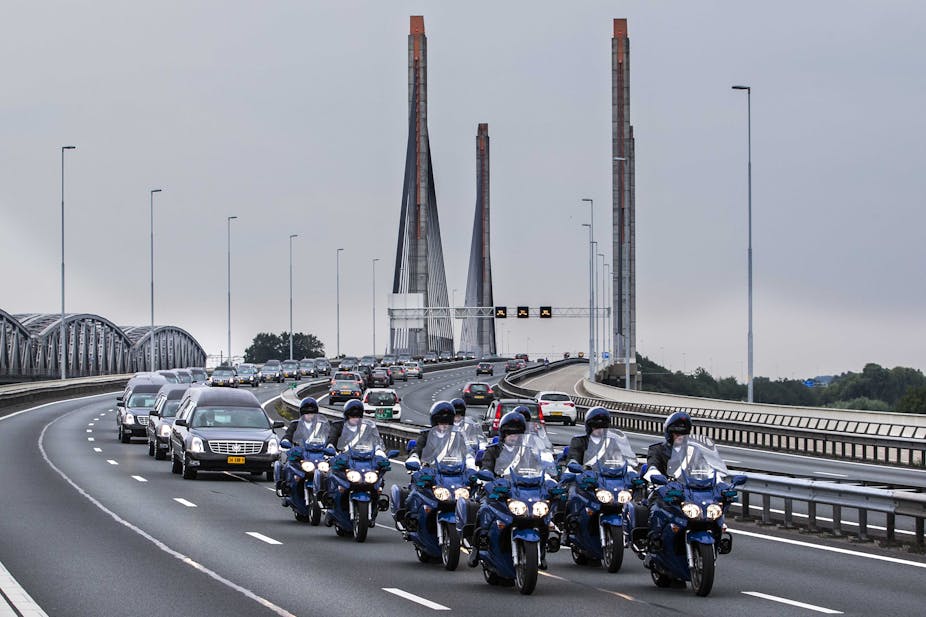The renewed escalation of the Ukrainian crisis, following the shooting down of Malaysia Airlines flight MH17, shows no sign of abating. Fighting in the east has continued both in and around the rebel stronghold of Donetsk and at the Russian-Ukrainian border where, according to reports, Russia has now started shelling Ukrainian military positions.
At the same time, more and heavier Russian arms are flowing into Ukraine, bolstering separatist forces, and new evidence has, apparently, emerged confirming senior-level links between the Kremlin and the separatists in eastern Ukraine.
As Ukraine once again teeters on the brink of war with Russia, the country’s government coalition collapsed on Thursday and its prime minister resigned over parliament’s failure to pass laws addressing the energy crisis and committing more funds to the defence budget. In response to the Yatseniuk’s resignation, parliament adjourned for two weeks, which, in turn, is likely to delay ratification of any agreement to allow international investigators to secure the crash site of MH17.
Meanwhile, the EU and US have continued to increase sanctions against Russia, prompting an angry response from Moscow. And British lawyers are apparently preparing to file a class action law suit against the Russian president and his inner circle in the United States.
Another false start
So, nothing really new – but at the same time everything is worse. What is particularly perplexing is all sides in the conflict have pursued the same policies, more or less, over the past eight months that have led us here and there is no indication of any change in direction. As I wrote in an earlier column this week here after the UN Security Council vote on the MH17 crash investigation on July 21, the unanimous vote had all the hallmarks of yet another step in the right direction, as well as those of another false start.
And yet again, it has been a false start similar to the Kiev agreement of February 21, the Geneva agreement of April 17, and the presidential elections on May 25. Each and every one of these milestones could have brought the crisis to an end, had it been followed through.
By the time of the Kiev agreement, about 100 people had died in protests on the Maidan. Five months later, three times as many completely innocent civilian passengers perished when MH17 was shot down. It would be naive to draw a direct line of causation from the failure of the Kiev agreement to MH17, but it is equally wrong to deny that multiple opportunities were wasted to de-escalate the crisis. As political leaders in Kiev, Moscow, Brussels, Washington and elsewhere are busy allocating blame for the worsening situation on the ground, they further erode the basis on which at least minimal trust can be rebuilt so that meaningful steps can be taken to contain and decrease violence in eastern Ukraine and prevent the situation from sliding into the abyss of all-out war between Russia and Ukraine.
There is a fatal logic to what has been going on. Every action taken so far has triggered a counter-action that was neither strong nor conciliatory enough to break the cycle of an ever escalating tit-for-tat. The Ukrainian government was unable to prevent the annexation of Crimea, indecisive in its early response to the spread of initially small bands of separatists, then wavered between negotiations, ceasefire talks, and an on/off “anti-terrorist” operation.

The EU and US promoted regime change in Kiev, but ended up merely with different faces by and large intent on preserving the very system of inefficiency, corruption, and weak rule of law that the protesters at the Maidan tried to get rid of. As openly as Washington and Brussels supported democratic changes, just as open were their disagreements with each other (and within the EU) over how to deal with Russia and what was perceived as a Russian attempt to fundamentally challenge Europe’s post-Cold War order by annexing Crimea.
Russian desperation
Russia, in turn, may look like the winner at this stage, but is unlikely to be able to walk away from the Ukrainian crisis unscathed. Moscow has bagged Crimea, thrown Ukraine back years if not decades in its social, economic and political development and sent a strong signal to other countries in the post-Soviet space how it feels about their relations with the EU.
Yet, as the West gears up to more sanctions, as NATO rediscovers a collective defence purpose and as the neighbourhood that Russia and the EU share edges closer to Brussels, these gains will soon turn out short-lived and hollow. In the meantime, however, Russia continues to act and react in the Ukraine crisis in a way that betrays a dangerous sense of desperation, betting on military escalation by proxy that is ultimately beyond the Kremlin’s control.
Lack of trust is not an insurmountable obstacle to crisis management, but there needs to be a lot of shared interest in disaster avoidance to reach, and sustain, truces and even peace agreements in the absence of empathy and trust. Where such shared interests exist, whether they generate initial agreements or not, they can also form the basis for building trust. This can be achieved by different parties signalling a willingness to resolve disputes, by demonstrating that they can take the other side’s perspective, and by following through on reciprocal commitments made.
In the context of the Ukraine crisis, this would require moving beyond the current zero-sum game in Ukraine and between Russia and the West. Every additional weapon that crosses from Russia into Ukraine; every rebel, soldier and civilian killed; and every new sanction imposed take us one step further away from this. And in the current logic, it is unclear which side will be able and willing to break the cycle first and whether it can trust the others to follow suit.

